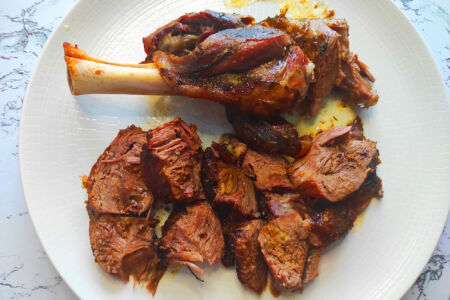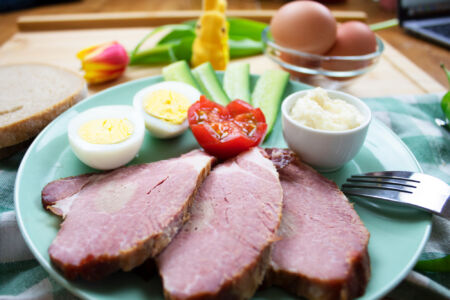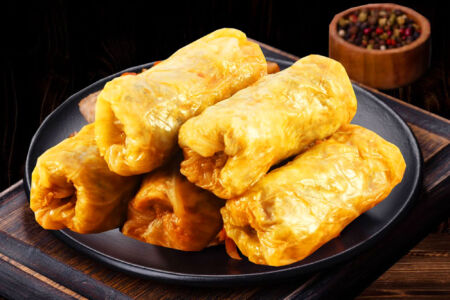How To Make Greek Chicken Souvlaki Skewers
The meat from which the skewers are prepared can be pork, chicken or lamb. I always prefer to cook them with vegetables. The flavour of grilled onions, tomatoes or peppers is unmatched.
Like any authentic Greek recipe, it bases its flavour on simple and fragrant ingredients and on combinations of truly inspired colours and flavours.
Greek pork or chicken skewers – (this time I make with chicken) tasty and flavourful, can be prepared at home by anyone.
Don’t forget to put some french fries next to the tzatziki sauce and the Greek sticks, if you want to have the impression that you are eating at the Greek tavern in the port.
If you can also buy a Greek beer, you can turn a dinner into an authentic Greek evening.
| Prep time | Cook Time | Rest Time | Total Time |
|---|---|---|---|
| 15 min | 8 min | 720 min | 743 min |
The meat usually used in Greece and Cyprus is pork, although chicken, beef, and lamb may also be used there and elsewhere. Juice from freshly squeezed lemon to oregano is very important.
The Greek recipe for chicken skewers – chicken souvlaki – is perfect for grilled chicken so that it is juicy, flavourful and tender at the same time. The chicken is marinated for start. The Mediterranean flavours in which Greek olive oil is strained are wonderful.
In Greece you can ask for souvlaki and it can be served as a “portion” or “pita souvlaki”.

A Little Souvlaki History
The practice of cooking food on spits or skewers in Greek culture dates back to the Bronze Age.
Excavations in Santorini, Greece, unearthed sets of stone cooking supports used by the island’s natives prior to the 17th century BC Thera eruption. Souvlaki was a popular delicacy in Santorini back in 2000 BC.
There are pairs of indentations in the stone cooking supports that were likely used to hold skewers, and the line of holes in the base allowed the coals to be supplied with air.
Souvlaki trays were discovered in Gla and Mycenae in Mycenaean Greece.
The Mycenaean Greeks’ souvlaki trays (or portable grills) were rectangular ceramic pans that sat beneath skewers of meat.
It’s unclear whether these trays were meant to be placed directly over a fire or if the pans were meant to hold hot coals like a portable barbecue pit. Spit supports appear to have been used at Nichoria well into the Early Iron Age.
In Greek literature, Homer mentions spit-roasted meat in the Iliad. This is also mentioned in Aristophanes Xenophon’s, Aristotle’s, and other works.
A small spit or skewer known as an obeliskos was used to roast thrushes in Classical Greece, according to Aristophanes.
The Greek author of the Prodromic Poems mentions “the hot meat shops” of Constantinople, which served spit-roasted meat slices similar to souvlaki known as psenasis souglitarea.

During his visit to the Boeotian countryside of southern Central Greece in 1850, Gustave Flaubert, a French traveler, observed Greeks “grilling pieces of meat on a bamboo stick.”
Modern-day souvlaki, on the other hand, was not widely available in Greece until after World War II.
Souvlaki skewers served as fast food became popular in the 1960s after vendors from Boeotia introduced them.
The term souvlaki was first used in English in 1942.
Ingredients
Instructions
Prepare the ingredients for marinating in a bowl and mix well. Cut the chicken legs into bite cubes.
Put the chicken in the marinade bowl and coat all the meat as well as possible.
Put then the chicken in a bag, seal it and left it in the fridge for at least 3 hours, but better overnight.
Next day make the skewers. Put the chicken on the skewer sticks.
Place the skewers on the grill (but you can also use the grill tray or the grill in the oven / electric grill) and left them cook for about 3-4 minutes on each side, to brown lightly.
Be careful not to overcook, not to dry the chicken.Serve Souvlaki with Greek pita and tzatziki, vegetables (optional) and/or french fries (optional).
Enjoy, Good Appetite!











